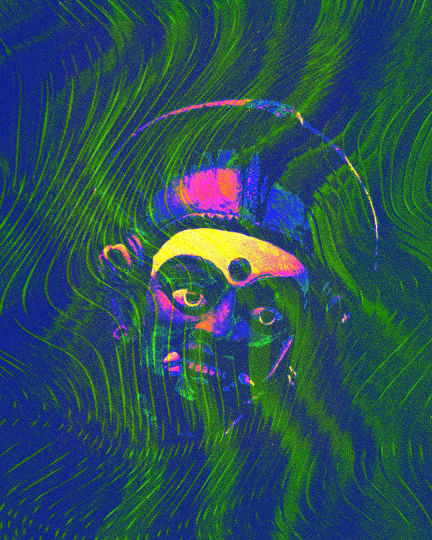The life conceived by Dalits has undoubtedly been influenced by the democratic upward mobilisation in current Indian society. Yet, the concept of purity is being preserved by the upper caste by not accepting food made by the lowered castes. And at the same time, ironically, lower castes are being perceived as the most disposable in terms of touch, accepting food from anyone. This also shows economic status and markers of distinctions have implication on the emergence of food and its symbolic appropriation. However, in the midst of birth ascribed caste identity of Dalits, oral history is divided on the basis of the superiority of the region as well as biases from the dominant perspective of an upper caste.
One such scarcely preserved legend is that of Mahar on the banks of the river with a strong ideological foundation. As referred to by the father of the Oppressed, Dr. Babasaheb Ambedkar, in his book Who were the Untouchables? writes, the identity of Mahars is based on occupation emanating from a lore of the traditions which explains their origin and status.
This legend is found in the region of Khandesh in Maharashtra State, on the banks of the Tapi River, whose (un)official language is Ahirani. Its lore tells the story of bravery as well as the brokenness of the community. Before that let’s understand what Bhadi is. Bhadi derives from the actual meaning from Bhakar and month of Bhadrapad. Bhakar usually refers to round, unleavened bread made from flours like Jowar, Bajara, Rice and Nachani. Bhakar is commonly eaten in Maharashtra, Gujarat, Karnataka, Telangana, Rajasthan and part of Madhya Pradesh. The month of Bhadrapad also comes with the no-work to the hands of landless laborers so it also means a few weeks of the month stand for pain and poverty. Bhadi is made with hard wheat so its elasticity can be removed, and so it doesn’t stale for a few weeks. In some places of Maharashtra, Bihar and Rajasthan Baati is made through wheat flour kneaded with salt, yogurt, and water in tennis balls sized portions. Which is then baked in a traditional chulha (earthen stove) until they turn golden brown. The only difference between Bhadi with Baati is that Bhadi is boiled without yogurt and salt. Eventually, Bhadi is cooked only once a year in the Bhadrapad month.
The legend of Bhadi Maay is still practiced in the month of Bhadrapad (A Hindi-Marathi month), after the upper castes follow their Bail Pola festival – celebration of the living stocks. In the region of Khandesh, Bail Pola comes on the No Moon day which is known as Shravan Amavasya. Bail Pola is practiced in several states at various times and in Maharashtra too. Ritual is the same pan-India. Bhadrapad’s 11th day, which is known as Bhadrapad Ekadashi is an auspicious day for the Mahars of Tapi River, to celebrate the Bhadi Maay festival.
According to a legend, the British Raj took the place of Peshwas after the Bhima Koregaon battle; some Mahars got the opportunity to join the British regiment, but not all of them. The Mahar regiment is still the most respected. People mostly from the peripheries of Satara and Pune city were given preferences. Naturally, it had violent consequences. Boycotting Mahars from social life became popular among the upper castes. On the bank of the Tapi River, untouchability started taking lives, mostly due to hunger. Those still working in the farms as daily wage labourers were not given their wages. Some of the Mahars wanted to feed their children and family members, so they stole the weakest bull who got hounded in the Bail Pola’s violent celebration and distributed its meat in nearby villages. The distribution of meat happened through the Tapi River at night. And then they cooked the meat in the night. It was the heavy rain season, and the night was the darkest. The time was looking to take a heavy toll, but the habit of Mahars forming the closest bonds in such a scenario united them. By seeing the smoke in heavy rains, the upper castes got to know how they were cooking at such a time when their bulls had just died. Boycott was in full swing, and the spite against Mahars got accelerated into fights and wars. The empty-hearted Mahar fought and won some of the battles, but then the upper caste, with their resources and privileges, managed to bring English officials to the Maharwada and Rajwada to punish them. But progressive officials didn’t punish and wanted to be just. They wanted to see what was in the vessels. The style of cooking the meat was to hide the redness of the meat; they hid it in Bajari’s limbs, leaves, and offshoot, which made the meat look like wheat and white. Even the English officer, with his empathy, didn’t take any action against Mahars and started providing rations every week after that incident. They also provided some of the work to the Mahar men and women so they couldn’t go to sleep with an empty stomach.
After that day, the 11th day of Bhadrapad month is celebrated on the banks of the Tapi River every year. Even in the Khandesh region, Dhule and Nandurbar districts' Tapi river influenced areas still follow this custom. Today, many of the literate and educated don’t understand the importance of this legend. But the songs are sung while cooking. The entire night, man and woman will cook Bhadi Maay, and before the sun rises, they worship wheat-cooked shapes in weapons, animals, and foot soldiers. While worshipping the households, every member has to attend the custom, which is not at all like Hindu orthodox practices. Every household sings the following verse seven times:
“Sat Bola Sat Bhadi Maay Sat
Saatvi le Chabuk—Bhadi Maay na Sat
Pachvi le Aari—Bhadi Maay na Sat
Dukh le maari—Bhadi Maay na Sat
Sat Bola Sat Bhadi Maay Sat”
Which means: Say the truth about Mother Bhadi. The whip to the Satvi (oppression), the truth of Mother Bhadi. The truth about Mother Bhadi is that she will take away our bad fortune. The truth of Mother Bhadi will kill the sorrow. Say the truth about Mother Bhadi.
Then the day follows. Bringing red meat home – singing the lore and some of the other ballads. Recently, the songs have been filled with memories of Babasaheb and history. The style of cooking wheat also takes time before worshipping the Bhadi Maay. Bhadi Maay literally means food. There is an interesting history behind procuring the leaf, offshoot, and limb. It shouldn’t be asked of or begged from the owner of the farm. It should be brought without knowing the owner. If someone catches while taking the priceless leaf, offshoots and limb, that person should leave the farm saying, “Sat Bola Sat Bhadi Maay Sat” which means: Say the truth about Mother Bhadi. The Bhadi Maay legends practice is cooking in various shapes from wheat takes at least four to five hours to cook. If one household is preparing the material in the evening, it has to be prepared by midnight, and then it should be put in the big vessel and cooked on wood fire. Before the sunrise, it should be in the basket brought from the Mang household, not from the market.
Once worshipping has been done, men go to get red meat, whichever is available at the shop currently, and the whole process of cooking red meat starts. With the Bhadi, some sweets should also be cooked to give to the upper caste. Sweets are generally Kheer. From the perspective of Mahars, no upper caste on the bank of the Tapi River should reject sweets from a Mahar’s household on that day.
Of course, the Bhadi Maay legend does talk about the nomenclature of caste and deep-rooted cultural practice, but its manifestation of caste notions emerges as a crucial transformation to practice of belonging and togetherness reflected in their vision to fight the injustices of caste society. The legend talks about the crisis, the conflict, and provides a guidebook for domestic and social life. The legend of Bhadi Maay is also a memory-making and storytelling that is lesser known but needs to be widely acknowledged and celebrated.

